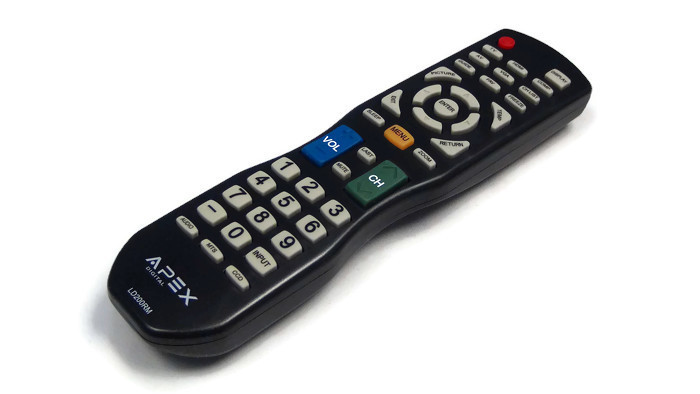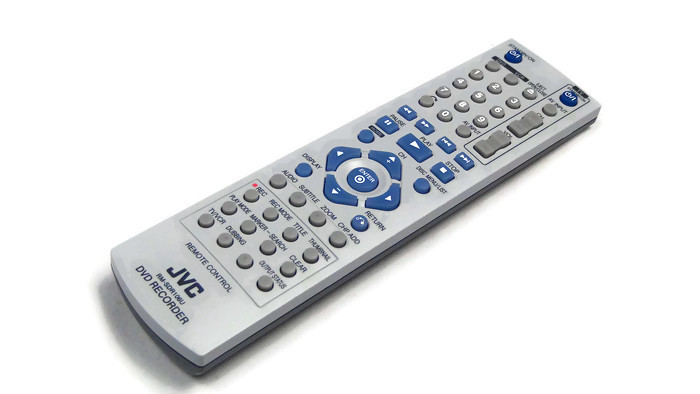If you are in the market for this JVC RMC1220 TV remote control, we have them here in stock at ReplacementRemotes.com. This is the brand new OEM remote from JVC, we offer a 60 day warranty and a guaranteed return policy as well. No programming required, just install new batteries and your all set. Call today and make your order, 336 924 8787.
Tips for Cable TV Cord Cutters
When it comes to cable TV, how many of the channels are you actually watching? This has been a problem since cable TV first came out and people realized after the first month that they were always hitting the same numbers in their remote control, but paying for all the rest. Thankfully, the Internet has made it possible for you to get the shows you want, without the heavy price tag.
Document What You Watch
Start off by writing down the channels and shows you and your family regularly watch. You might even monitor the time you spend watching them. Divide your monthly cost by the hours watched to see what it costs you per hour to see those shows. Is it worth it?
Start Streaming
The Internet offers a variety of ways to stream the shows you want, without the high price tag. You can still use your remote control, though you may need to add devices. Start looking up your shows to see what apps you need to stream them, and, in many cases, you can stream them all through one app.
Get More Use Out of Systems
There are different boxes you can buy to stream television, but you may not need them. If you have a gaming system, you may be able to stream directly from it. You can also use your phone, tablet, computer, or Smart TV to stream movies and television shows. Be sure to look up what apps are compatible with what you already have so you don’t have to make an extra purchase.
You can still get the entertainment you want without the hassle of dealing with cable companies. In fact, you may be able to watch even more than you could with the cable programs that limit your access.

APEX LD200RM TV Remote Control
If you are in the market for this Apex LD200RM TV remote control, we have them here in stock at ReplacementRemotes.com. This is the brand new OEM remote from Apex, we offer a 60 day warranty and a guaranteed return policy as well. No programming required, just install new batteries and your all set. Call today and make your order, 336 924 8787.
CRT TVs Remain Popular Overseas
Believe it or not, LCD and LED televisions don’t dominate new television sales worldwide, as a strong international market remains for traditional cathode ray tube televisions and related components like remote controls.
While the CRT TV has been supplanted in the U.S. by LCD and LED televisions, with CRT sets increasingly ending up in landfills or being recycled for components, overseas markets still have a demand for old-style sets.
Worldwide, sales of CRT sets peaked in the mid-2000s, with about 130 million units sold in 2005. Since then, sales have declined to about 90 million, but analysts predict sales to remain steady for years to come.
The CRT sets are mostly manufactured in Asia and are very inexpensive, compared to more costly LCD and LED sets. For many people in developing nations, a CRT television is the first luxury item they buy once they obtain a little disposable income.
One positive impact of the developing world’s demand for CRT sets is that it creates demand for recycled components, from American CRT sets being discarded by homes upgrading to more modern devices. E-waste is a growing environmental concern, and finding ways to keep electronics out of landfills is a key priority for environmental advocates.
ReplacementRemotes.com sells new and refurbished remote control devices for a wide variety of electronic devices. In addition to remotes, the company also provides TV stands, accessories, replacement product manuals, lights, and much more. The company also operates a repair service for certain devices. To learn more, contact 1-877-671-7173.
Eco-Friendly Recycling for CRT TVs
Electronic waste is a huge problem as more devices hit the market, and as cycles of obsolescence grow shorter because companies are more quickly introducing the latest and greatest gadgets and gizmos. Responsible electronics owners who care about the environment will want to find eco-friendly ways to dispose of old remote controls, gaming consoles, and CRT TVs.
According to the Environmental Protection Agency, more than 704 million cathode ray televisions were sold in the U.S. since 1980. As LCD and LED televisions have supplanted these sets, millions of these televisions are ending up in landfills, creating environmental hazards because of their components and taking up space. Recycling these televisions is better for the environment, as it prevents them from ending up in landfills or being illegally dumped. Also, reclaiming the materials from these televisions reduces the need to produce more raw materials for electronics.
Many electronics stores and dealers offer recycling programs for old remote controls, mobile phones, televisions, and other devices. Inquiring with your local retailer can help you find an e-waste recycling program. Also, local recycling companies may also be able to help CRT TV owners who want to responsibly dispose of their old sets.
When taking an old set for recycling, make inquiries as to whether the company recycles the devices or stockpiles them, as stockpiling of old CRT TVs by recyclers who don’t want to bear the cost of recycling these devices has become a problem in recent years.
ReplacementRemotes.com sells new and refurbished remote control devices for a wide variety of electronic devices. In addition to remotes, the company also provides TV stands, accessories, replacement product manuals, lights, and much more. The company also operates a repair service for certain devices. To learn more, contact 1-877-671-7173.

JVC RMSDR106U DVD Player Remote Control
If you are in the market for this JVC RMSDR106U DVD Player remote control, we have them here in stock at ReplacementRemotes.com. This is the brand new OEM remote from JVC, we offer a 60 day warranty and a guaranteed return policy as well. No programming required, just install new batteries and your all set. Call today and make your order, 336 924 8787.

Techwood 90W0186 Sound Bar System Remote Control
If you are in the market for this Techwood 90W0186 Sound Bar System remote control, we have them here in stock at ReplacementRemotes.com. This is the brand new OEM remote from Techwood, we offer a 60 day warranty and a guaranteed return policy as well. No programming required, just install new batteries and your all set. Call today and make your order, 336 924 8787.
How Blu-Ray Technology Killed HD-DVD Technology
Some of you might remember the battle between Blu-ray and HD-DVD technologies several years ago. Both were new technologies released in 2006 as a replacement to current DVD technologies. At that time, there was a division between major companies and what format was the best to use. On the HD-DVD side were companies like Microsoft, Toshiba, and Intel. On the Blu-ray side were companies like Sony, Disney, Apple, and Dell.
Initially, HD-DVD devices were the first to market, in April 2006, and were slow to be received by consumers. Blu-ray players were released in June 2006, but gained substantial momentum with the release of Sony’s PlayStation 3 video game console in November 2006. While Microsoft attempted to combat this by releasing a stand-alone HD-DVD player to use with its XBOX 360 gaming console, it was not well received.
Further hampering the battle between the two formats were the major Hollywood motion picture studios. Right from the start, both Sony and Disney opted for Blu-ray technologies, and it was not long before other studios, like Warner Brothers, made a decision to go with Blu-ray format over the HD-DVD format.
In the end, the battle between Microsoft and Sony and their gaming consoles is what ultimately killed HD-DVD technology. Consumers could get a gaming machine which also supported Blu-ray disc playback for less than it cost to purchase an XBOX 360 with the additional, external HD-DVD disc drive.
While HD-DVD technology and the companies that supported the format put up a good fight, lasting almost five years, in the end Blu-ray won out and has continued to grow in popularity. If you happen to own a HD-DVD player and need a new remote control, feel free to contact Replacement Remotes at 1-855-5-REMOTE (1-855-573-6683).
What Are Blu-rays and How Are They Better than DVDs?
Blu-ray discs are a form of optical storage similar to DVDs. However, instead of using red lasers to burn data onto DVD discs, Blu-rays use a violet-blue laser, hence the name Blu-ray. Since Blu-ray discs use a different laser format to store data, it allows for the data to be placed closer together, thus increasing the storage capacity from 4.7 GB on a single layer DVD to 25 GB on a single layer Blu-ray disc.
Due to the larger storage capabilities, Blu-ray discs are able to store high definition (HD) video and picture content, which standard DVDs cannot. This feature has made Blu-rays more popular in recent years as more people have switched to the newer technology. As HD technologies continue to become more prevalent and used by more people, the expectation is DVDs will eventually stop being used, much like how DVDs displaced VHS tapes.
Blu-ray technologies are backwards compatible with both CDs and DVDs. As a result, Blu-ray players and optical drives are able to support these formats to playback music and movies, as well as access pictures and other data stored on CDs and DVDs. In addition, Blu-ray discs have a hard coating on them, which DVDs do not, that helps prevent against scratching and protects the contents of the disc.
Whether you currently have a Blu-ray player or are still using a DVD player, you can find universal remotes for your electronic devices at Replacement Remotes. For assistance in selecting the right remote controls for your devices, contact us at 1-855-5-REMOTE (1-855-573-6683) today.

SAMSUNG AH5902692E Sound Bar System Remote Control
If you are in the market for this Samsung AH5902692E Sound Bar System remote control, we have them here in stock at ReplacementRemotes.com. This is the brand new OEM remote from Samsung, we offer a 60 day warranty and a guaranteed return policy as well. No programming required, just install new batteries and your all set. Call today and make your order, 336 924 8787.
